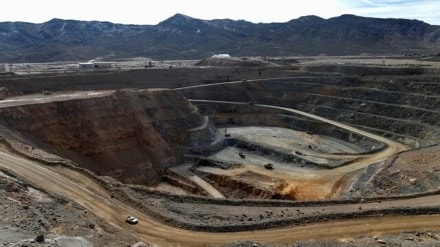The Union Cabinet is likely to approve the rare earth permanent magnets (REPM) manufacturing incentive scheme with a corpus of ₹7,300 crore on Wednesday.
According to sources, the scheme—India’s answer to China’s stronghold over the global rare earth permanent magnets supply chain—aims to establish a fully indigenous manufacturing ecosystem with an annual production capacity of up to 6,000 tonnes. The programme is expected to run for seven years.
Finance ministry grants approval
The finance ministry’s Expenditure Finance Committee (EFC) has already approved the ₹7,300-crore production-linked incentive (PLI) scheme, paving the way for Cabinet clearance.
Several global and domestic players, including Lynas, Iluka, Rainbow, Bharat Forge, Sona Comstar, and JSW, have shown interest in the initiative.
Who will implement this program?
“The Cabinet approval is expected tomorrow, and soon after, the scheme guidelines will be released,” a highly placed source said. The programme will be implemented by the Ministry of Heavy Industries.
The initiative is aimed at developing a domestic ecosystem for REPMs, which are critical components for electric vehicles, defence systems, and renewable energy technologies.
China currently controls roughly 60% of global rare earth mining and nearly 90% of refining and processing capacity. In April, it imposed restrictions on REPM exports, tightening supplies to India’s automobile and electronics industries.
Through the scheme, the government seeks to build a homegrown value chain spanning the conversion of NdPr (neodymium–praseodymium) oxide into sintered NdFeB (neodymium–iron–boron) magnets.
REPM production involves several steps including mining, beneficiation, processing, extraction, refining to rare earth oxides, conversion to metal and alloy, and finally magnet manufacturing.
Of the total outlay, ₹6,500 crore has been earmarked for capital expenditure and ₹800 crore for operational costs. The scheme will support both public and private sector manufacturers with capabilities across the value chain, from raw material processing to finished magnet production.
The incentives will specifically target facilities capable of undertaking the final three stages: converting rare earth oxide to metal, metal to alloy, and alloy to magnet. India currently lacks the technology and infrastructure for these advanced processes.
India imports almost all its REPM requirements. Domestic demand is estimated at around 4,010 tonnes annually and is projected to nearly double to 8,220 tonnes by 2030.
While NdPr oxide prices in India broadly mirror global rates, finished REPMs are about 43% costlier in the country than in international markets.
India holds an estimated 6.9 million metric tonnes of rare earth reserves but produced only around 2,900 tonnes in 2024. Imports of rare earth magnets reached 53,000 tonnes in FY25, underscoring the gap between domestic supply and demand. State-run IREL remains the only public sector enterprise involved in rare earth mining and refining.
